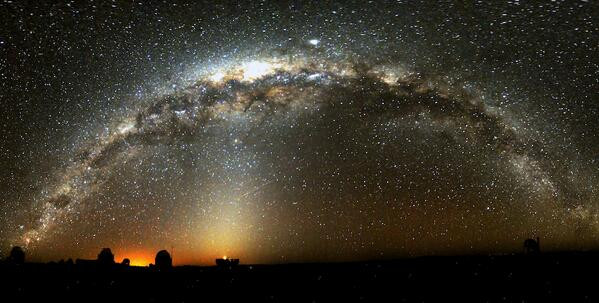Years ago, astronomers said that our Milky Way would end its life as it will collide with a large spiral galaxy called Andromeda. A recent study made through Europe's Gaia spacecraft showed more precise information, which specifically tells us that the phenomenon won't happen at the time everyone is expecting.
Through the observation made by Europe's Gaia spacecraft, experts found out that the terrifying collision that is about to happen between the Milky Way and Andromeda galaxy will happen a bit longer than expected. As SPACE reports, the massive collision will happen 4.5 billion years from now.
Before the research conducted, experts estimated that the collision would happen sooner about 0.6 billion years earlier.
Gaia spacecraft was launched in space six years ago. Since then, the spacecraft was used to monitor the movements and the positions of the stars and other celestial objects.
Gaia spacecraft was very effective and efficient in helping the astronauts create the best Milky Way's 3D map that science has as of the writing. This blueprint is used by experts to know more about the whereabouts of the objects in the space.
Roeland van der Marel, the lead author of the study and one of the experts of Space Telescope Science Institute in Baltimore, said, "We needed to explore the galaxies' motions in 3D to uncover how they have grown and evolved and what creates and influences their features and behavior."
Aside from the stars inside Milky Way, Gaia is also focused on other stars that are found in other galaxies close to it. Through the data gathered from the spacecraft, astronomers found out that it has also gathered the data of other stars outside our galaxy such as Andromeda, which is also known as M31, and Triangulum, also known as M33.
By observing the data gathered, experts found out both M31 and M33 rotation rates, which the researchers used to tally and analyze to map out where these celestial objects be a few billion years from now.
Furthermore, the information gathered through the study posted in The Astrophysical Journal also revealed that despite the distance of the Milky Way from these neighboring galaxies, which is about 2.5 million to 3 million light-years away, the possibility that these galaxies are interacting with each other is high.
Prusti further exclaimed how Gaia is expected to map stars in our galaxy. But with the recent study, it only shows how the results have exceeded everyone's expectation as the spacecraft "can provide unique insights into the structure and dynamics of galaxies beyond the realm of our own."






